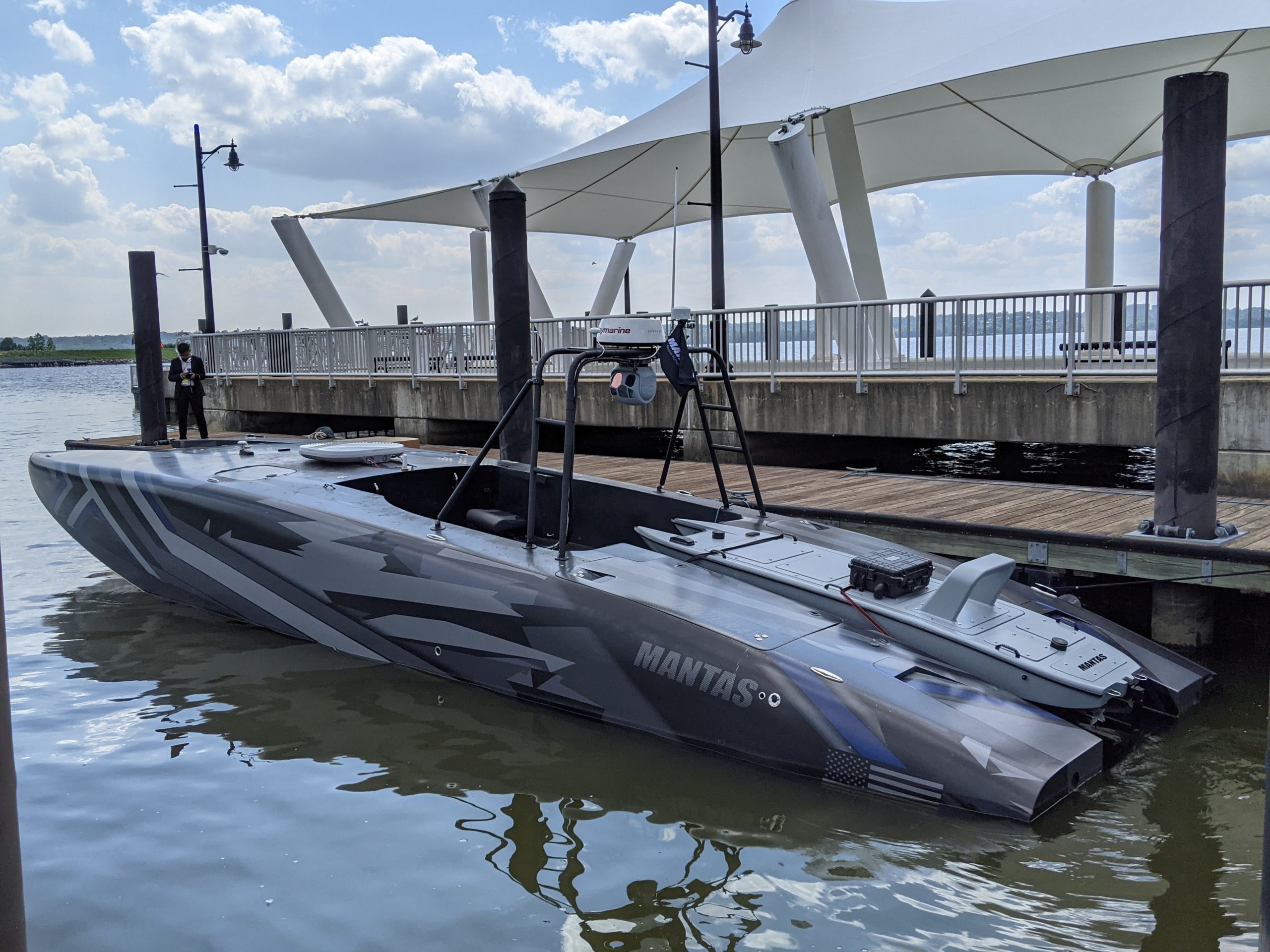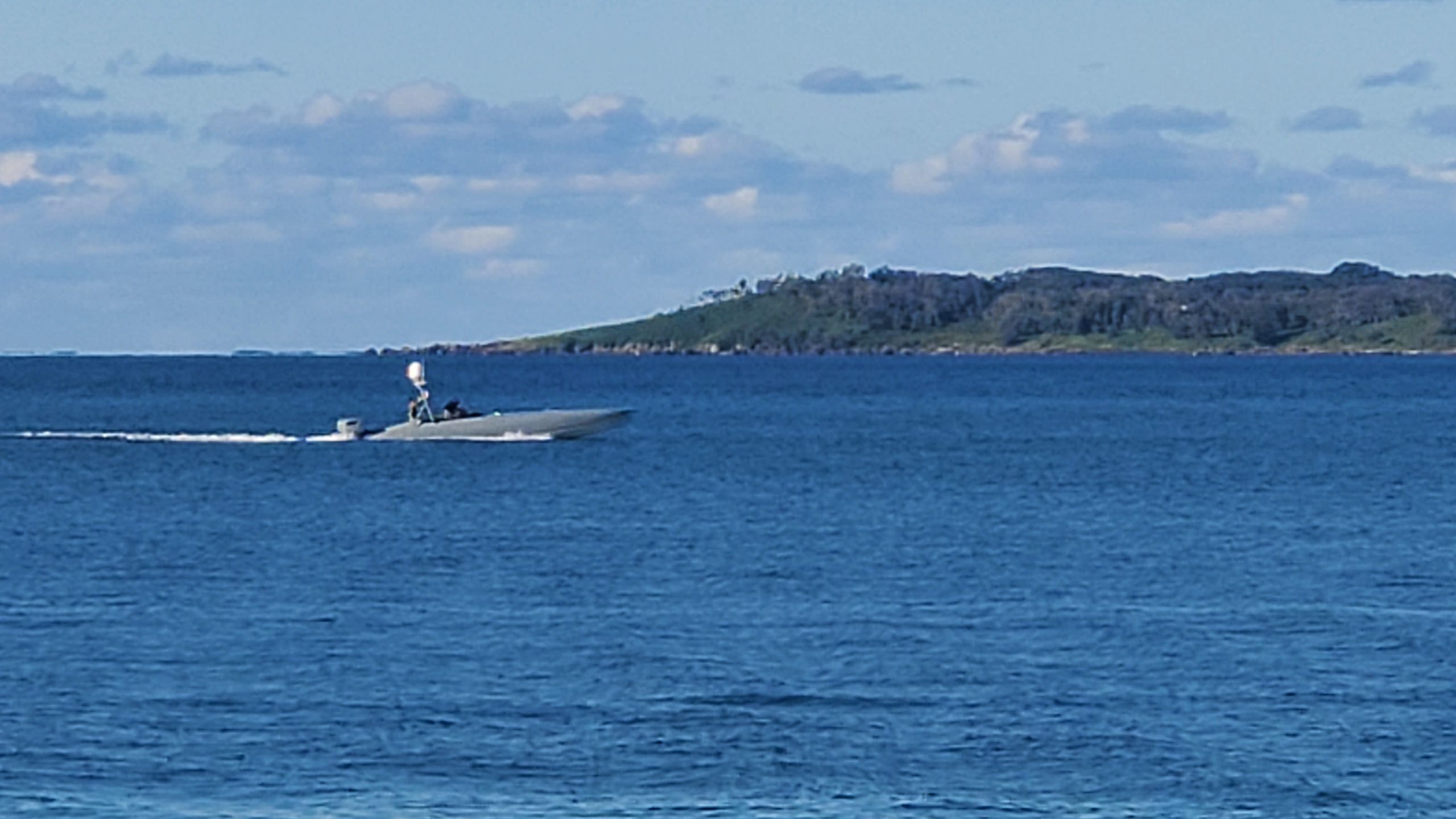By Robbin Laird
As the U.S. Navy shifts to a priority emphasis on distributed maritime operations, the opportunity for maritime autonomous systems to play a growing role is opened up. That is for the simple reality that as distributed modular task forces deploy, autonomous capabilities can contribute to the lethality and survivability of the force.
The kill web is a collection of sensors netted with C2, able to pass critical data to the optimal delivery system in order to rapidly achieve the Commander’s intent. Software technologies are key parts of the way ahead to allow for switching across multiple domains to provide for a secure operational web.
Autonomous USVs can provide wolfpack deployed ISR or relay systems to enhance the reach and survivability of the fleet in its distributed operational role. They can also provide an ability to move data to other deployed task forces to provide for enhanced integrability to do so.
This is about deploying autonomous USVs in a wolfpack to operate payloads appropriate to the mission assigned to them by the commander of the modular task force. This means that the nature of the payloads onboard the USVs and their ability to work as a mission team are key attributes of how an autonomous system wolfpack can contribute to the survivability of the fleet (situational awareness) and lethality (through target acquisition support).
But the nature of the platform is important to enable such a capability. The focus on autonomous systems may be often described as platform agnostic, but clearly the platform needs to be viable for the mission sets it carries the payloads for.
So what might such a platform look like?
And how might it be built, upgraded and maintained?
I would start from the simple point that an autonomous USV is not a morphing of a manned vessel to an unmanned one. It is not simply replicating what a manned ship looks like, but simply operated by robotics or simply being a vessel remotely piloted.
Recently, I had a chance to talk with Bruce Hanson of MARTAC systems with regard to how they have built and are upgrading their platforms upon which various payloads are being operated. In the next piece, I will focus on the kinds of payloads which their platforms are already operating in the real world. The point being what MARTAC has delivered is an autonomous USV capability which navies and maritime security organizations can use to build their operational experience for enhanced defense and security capabilities now and to learn how to reshape the force going forward.
The company currently features two boats, one 12 feet in length (MANTAS) and the other 38 feet in length (DEVIL RAY). They have other sizes of boats in process, but the core point is that they have built the boats so that if one can be trained to operate one of them one can operate the others as well.
Hanson underscored that they built their boats since 2010 by building vessels of three feet in length so that they could operate several of them to test out systems and capabilities. This meant also that from the ground up they have focused on how the vessels can operate as a wolfpack. As he noted: “There is no point in simply looking at one of our boats in isolation: it is about they can operate as a wolfpack, operating in your terms within a broader fleet kill web or mesh approach.”
Hanson underscored that “the vessels talk to each other and can adjust to single platform failures or degradation.” As he put it: “They can operate as a self-healing commando team.”
The boats are built to provide a scalable fleet of USVs. And Hanson noted: “What you get with the different size vessels are differences in range and payload ranging from 18 to 16,000 pound payloads and ranges from 35 to 1000 nautical miles on vessels from 6 to 60 feet.”
The boats are built to interface with customer payloads, as the company has eschewed from the outset building their own payloads. From the beginning, they understood that customers would wish to operate their own payloads, whether that be a U.S. service preference, or for allies and partners.
The boats are catamarans. Hanson and his team hold the world speed records for catamarans and they have applied their real-world experience to building boats to operate as USVs for the maritime and security forces. The boats are built from carbon fiber and are very durable and able to operate through waves in high sea states.
The form factor of the boats is such that they can operate from standard navy RHIB launchers , and can be configured to fit into various Naval standard launch systems as well.
The company has its own core software team which builds the software to operate the vessel, the C2 and the interface with the payloads. As with all good smaller companies building a focused capability, they control the entire upgrade capabilities of their operating software systems for their boats.
The boats come standard with four independent C2 systems which allows for flexibility in operating the boats dependent on the mission sets. The boats have low / high bandwidth sat com, high bandwidth line of site, low bandwidth line of sight and 4G/5G communications capabilities. According to Hanson: “We have quite a bit of edge processing on the boat along with cyber protection systems.”
The boats have a unique dead zone capability as well. This means that boats will stop, slow down, return to base, continue or do some other response if communications are cut so that the MARTAC boats do not suffer from the “runaway” boat problem which other USVs have demonstrated in various exercises.
The control system is designed for handoffs for boat control among operators in the fleet or ashore. The system can allow coalition transfer as well which would mean that a European nation with a fleet of MARTAC boats in operation could transfer control of those boats for a period of time to a partner or ally for their mission.
The boats are built to operate together or separately dependent upon the mission requirements. But they built the boats with a nested dolls approach. This means that the 38-foot boat can launch autonomously a 12-foot boat to collaborate in the mission as well.

The company has a slogan which goes with their company moniker which is “Beyond Human Capability.” What this bluntly means is that the users of the boats need to understand that these boats are not simply mimic replacements for what humans would do if operating on the boats. Rather, the boats operate differently from how a human could do so if on the boats. What this means, for example, is that the speed of the boats and the turning ratios of the boats are beyond what a human onboard could survive.
Getting navies to understand that autonomous systems are not remotely piloted is a challenge as well. Hanson tells the story of an exercise with the U.S. Navy where the MARTAC representative told the US Navy evaluator that he was going to lunch right in the middle of the live mission. The evaluator commented: “You can’t do that – who will run the boat?” “It’s Sea State 3+”The MARTAC rep said: “The boat is operating itself. See you after lunch.” When he came back from lunch, the boat was performing as expected and the U.S. Navy evaluator said: “Your boat truly is autonomous!”
Building a robust platform from day one to be autonomous, with appropriate operational software, but allowing for flexible customer payloads is what MARTAC is focused on doing with regard to their USV boats. In the next piece, I will focused on demonstrated missions which they have been able to execute in working with the US Navy and allies.
The video below shows a clip of the MANTAS returning to the DEVIL RAY after performing an ISR mission during Autonomous Warrior 2022 (Credit MARTAC)
Featured Photo: Devil Ray operating in Jarvis Bay, Australia, during Autonomous Warrior 2022 Exercise held by the Royal Australian Navy in May 2022.
For an explanation of the nested doll concept of operations, see the following:
Also, see Chapter Four on “The Coming of Autonomous Systems” in
Defense XXI: Shaping a Way Ahead for the United States and Its Allies
And for a comprehensive examination of the shaping of the maritime kill web concept of operations:


